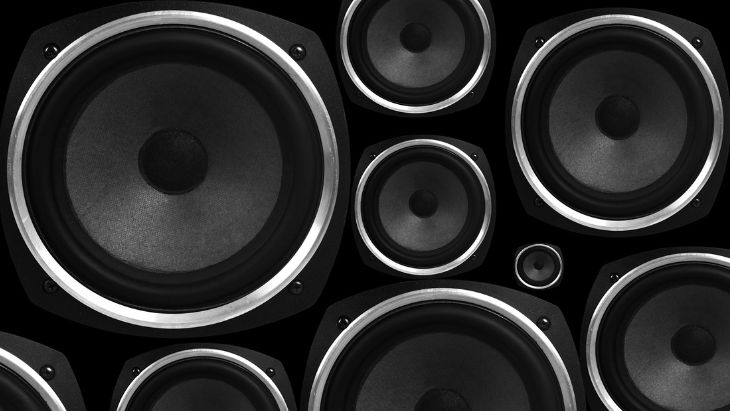Speakers receive audio signals from a receiver or amplifier in the form of an electric current. As the current passes through them, they may have some resistance to the current. The resistance of a speaker to the electric current passing through it is measured in ohms. When the ohm rating of a speaker is high, the speaker needs more current to turn it on. So can you use speakers of different ohm ratings together? For instance, can you use 4 ohm and 8 ohm speakers together? Read on to find out.
Why Impedance and Resistance Matter
While both impedance and resistance are measured in ohms, resistance only includes real numbers such as 4 ohms and 8 ohms. On the other hand, impedance includes both real and imaginary numbers such as 4R + 8ij where 4R is a real value whereas 8ij is an imaginary number. Whereas resistance controls the flow of both DC and AC, impedance only controls the flow of AC.
Impedance limits current flow in a circuit just like resistance. Although impedance may vary for different sound frequencies while resistance remains constant, the impact of resisting current is similar. Calculating the impedance rating of a speaker is done over a wide range of audible frequencies.
If there is a mismatch in the amp and speaker impedances or resistance, the amp’s circuitry may get damaged. The result is poor sound quality and distortion. Essentially, the power needs from the amp are highest at high volume. Thus, poor sound quality due to impedance mismatch is more likely to occur when listening to music loudly.
Can You Use 4 Ohm and 8 Ohm Speakers Together?
Generally, a 4-ohm speaker requires more power than an 8-ohm speaker to produce sound with similar loudness. This means that a 4-ohm speaker needs a more powerful amplifier than an 8-ohm speaker. If you want to mix speakers with different ohm ratings, you need to get the ohm calculations right to avoid damaging your audio system.
For instance, mixing two speakers rated 4 and 8 ohms requires you to ensure the amp or receiver accepts a minimum of 4 ohms. When you combine 4 and 8 ohm speakers, you will get improved sound output. However, you must use a serial connection to avoid blowing your amp.
Many receivers are designed to power 4-ohm speakers without shutting down or overheating so long as they are used within their impedance limits. You can avoid exceeding the limit by setting the impedance switch to the highest setting and keeping the receiver or amp properly ventilated.
How to Use 4-Ohm and 8-Ohm Speakers Together
Here are the steps to follow when connecting 4 and 8 ohm speakers together:
Step 1- Confirm the ohm ratings
First, check the rear of the speakers to confirm their ohm ratings. One should be rated 4 ohms and the other should be rated 8 ohms.
Step 2- Check the minimum ohm required
Check the minimum ohm required to hook the speakers to the amp. The amp should support a 4-ohm speaker at the minimum. If that’s the case, then you can hook both 4 and 8 ohm speakers.
Step 3- Calculate the total resistance
Before making the connection, you need to calculate the total resistance of the speakers you want to connect together. For instance, when connecting a 4-ohm and 8-ohm speaker in series, the total resistance is 4+8=12 ohms.
If your amp has a minimum impedance rating of 4 ohms, you must ensure the overall load does not go below 4 ohms. In this case, the overall load will be 12 ohms when you connect the speakers in series. If you were to connect them in parallel, the total ohm would be 1/ (1/4 + 1/8) =2.67 ohms, which is lower than the minimum 4-ohm amp rating. Thus, do not connect the speakers in parallel as you risk damaging the amp and the speakers.
Step 4- Connect the speakers in series
Now that you have determined it is safe to connect the two speakers in series, you will need to start by stripping each end of the speaker wires. You can strip each wire up to about 1.5 inches from the end.
To connect the speakers in series, connect the negative terminal (black wire) of the first speaker to the positive terminal (red wire) of the second speaker.
Connect the positive terminal of the first speaker to the positive terminal of the amplifier. Then connect the negative terminal of the second speaker to the negative terminal of the amplifier.
Ensure you connect the wires tightly together to avoid having a loose connection when using the speakers.
Now, play music at a low volume. Then increase the volume gradually to safe levels. In case of any distortion, turn down the volume gradually until the distortion is eliminated.
Final Thoughts
Can you use 4 ohm and 8 ohm speakers together? Yes, you can. Just ensure you connect the two speakers in series. Connecting them in series ensures their overall load impedance is higher than the minimum required ohm rating of the amp. That way, you will get improved sound quality without any distortion.
Michael Evanchuk is a San Francisco-based sound engineer with 20 years’ experience installing, troubleshooting, and repairing commercial, automotive, and household sound equipment. Evanchuk owns an auto stereo center, where he offers highly competitive car audio installation and repair services. He has written dozens of articles on different sound engineering topics, all of which have been published in leading journals, blogs, and websites.






